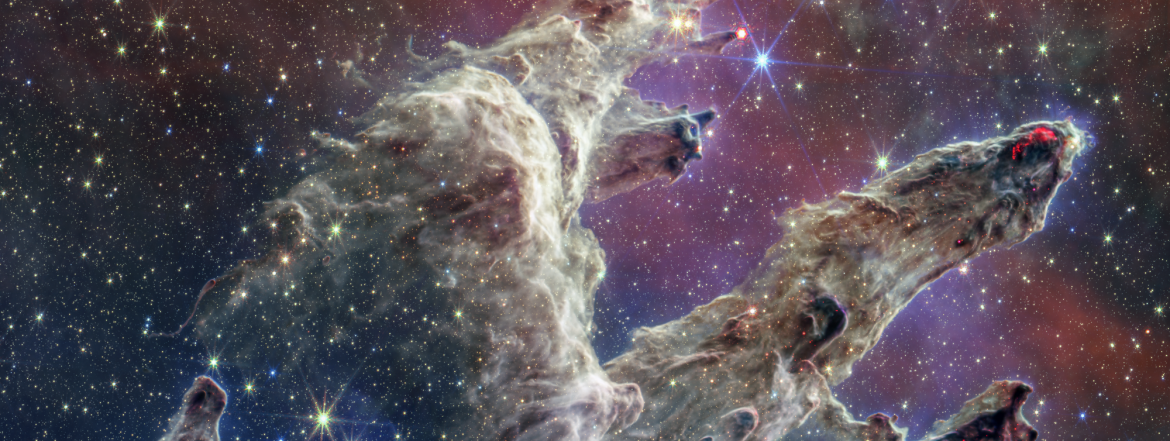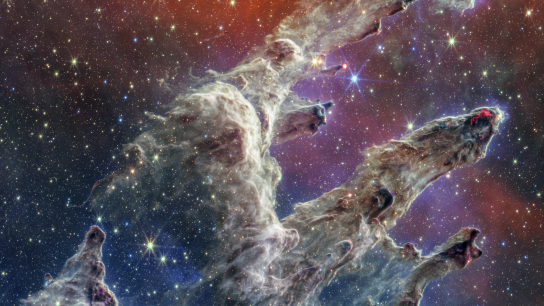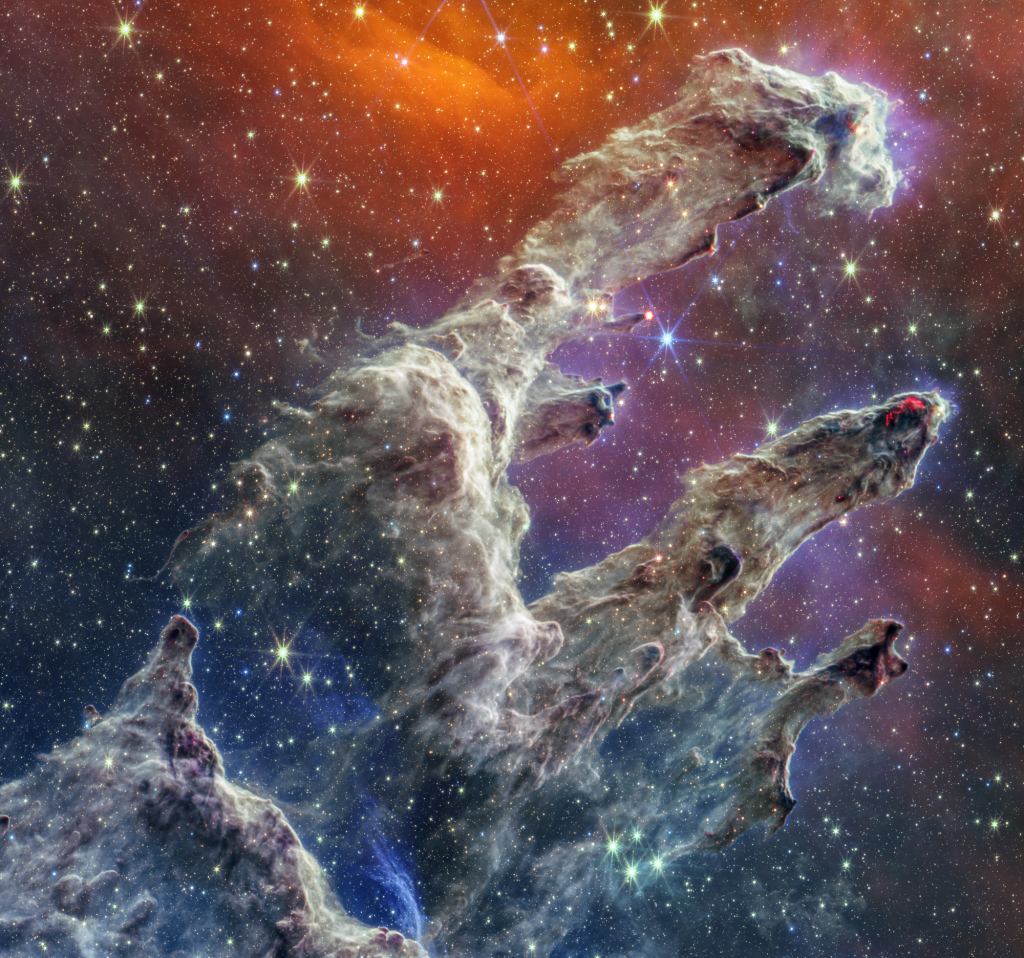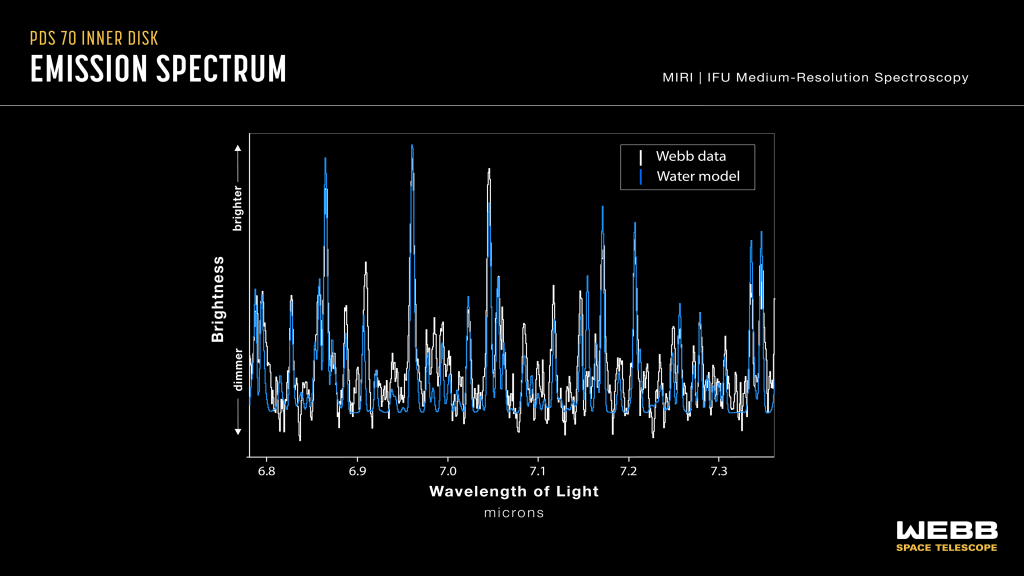What is Life: Ancient Answers to Modern Questions
by
Ethics and Astrobiology is a collaborative project emerging from a reading group that explores astrobiological research on a temporal scale: what life was, what life is, and what life could be across the cosmos. In the gatherings of this reading group, the collaborators leveraged the interdisciplinary friction generated by thinking through such queries together as an occasion to create a space for ethical reflection. What follows in this series is an attempt to capture some of that intellectual magic for a broader audience.
In February 2023, Ethics and Astrobiology co-facilitator Martin Devecka convened a jam-packed gathering of astrobiologists and scholars of the ancient world to answer the question, “what is life?” At first blush, it might seem incongruous to bring astrobiology and the study of the ancient world together. And conference participants were admittedly forced outside of their academic comfort zones. Yet both astrobiology and ancient studies are paradigms of expansion. As a field of inquiry, ancient studies opens what has historically been defined as “Classics” in the European tradition to broader geographies and temporalities beyond Greece and Rome. And astrobiology opens up the traditionally earthbound study of living things to new applications throughout the universe.
The idea behind the conference is that Ancient Studies can offer new solutions to a problem that plagues astrobiology. Scientists have no idea whether the features of life on Earth, including this Archean passage from a geochemical world to a habitable planet nurtured by biogeochemical cycles, are typical of all life in the cosmos, or whether conversely Earth life is an outlier among a tremendous diversity of ways of being alive. Astrobiologists talk about this as the “n=1 problem,” which is to say the impossibility of generalizing across a population from a single sample. Life in the universe is like a box of chocolates: picking and studying just one will probably give you a bad idea of the diversity of the whole.
The n=1 problem is a real barrier to astrobiological research. If life is indeed a planetary process, we currently only have one living planet to study. Scholars of ancient civilizations feel no such constraint, because there is no monolithic, singular human civilization. Instead there exists a multiplicity of different cultures. And within that multiplicity—real cultures, which have left archives and artifacts for us to interpret—the observer can encounter myriad understandings of life, including ideas that might be more open to biologies not tied to our particular moment of anthropocentrism.
As it turns out, many ancient cultures knew that life is a planetary process, but they did not express this knowledge in terms that are immediately recognizable within a modern technoscientific paradigm. And it was precisely the spirit of Thomas Kuhn’s The Structure of Scientific Revolutions, and his historical study of paradigm shifts, that animated the conference’s opening keynote, presented by philosopher of science Carol Cleland. Cleland’s book, The Quest for a Universal Theory of Life, is grounded in an explicitly analytical philosophical tradition, and contextualizes contemporary astrobiology as part of a larger endeavor to find a universal theory of biology.1 Cleland pointed out that “life,” as a natural kind like “water” or “trees,” is not going to be possible to define according to the kinds of stipulative criteria we’ve come to expect from dictionary definitions. Since empirical criteria derived from our experience of life on Earth are likely to fail to embrace the full diversity of life in the cosmos, Cleland argued that astrobiologists should plan the search for life beyond Earth, not on the basis of preconceived notions as to what life is and where it can thrive, but as a search for anomalies that might turn out to be novel forms of life. Cleland’s keynote reverberated throughout the day, especially the question of balancing the need, on the one hand, for astrobiologists to tailor their search for a suite of expected biosignatures against the desire for a wide-spectrum search, on the other.
The acronym LAWKI—Life As We Know It—was offered as an acknowledgement that scientists are not ignoring the important definitional challenges outlined by Cleland. At its most abstract, LAWKI rests on a four-pillar definition of biological life–metabolism, reproduction, homeostasis, and Darwinian evolution. This generalization expresses features shared by all living things on Earth. The first session of papers offered three different perspectives on the extent to which that generalization can travel beyond the terrestrial realm. Stuart Bartlett, a physicist, offered the concept of “lyfe,” developed by him and by the planetary scientist Michael Wong, as a way of broadening the four-pillar biological definition of life to include unfamiliar instantiations of each pillar. Michael Wong further developed the distinction between life-sustaining and life-generating planetary environments—between habitability and the useful new coinage “genesity”—in his talk. Wong suggested the salience of non-Western ways of thinking and knowing, whether ancient or indigenous, for thinking about life in the holistic, planetary ways that astrobiology requires. Colin Webster, a historian of ancient medicine, wrapped up the first panel by historicizing the notion of “organisms” as collections of parts that work to ensure the survival of the whole. Webster contrasted this teleological notion with the persistence of perittoma, or excrement, as a non-teleological element in Greek medical thought that might map onto the notion of “biosignature” which is so central to modern astrobiology.
The second panel began with the shared premise that life on Earth has sculpted the planet, and that this global impact suggests a way to remotely detect exoplanet biospheres. Natalie Batalha, the director of UC Santa Cruz’s Astrobiology Initiative, opened the panel with a presentation on the history and future prospects of the search for life beyond Earth. Batalha chronicled the ever-expanding scope of this search–first by probes within our solar system, then by SETI-style searches in radio and other spectra for technosignatures, and then by spectral observation or direct imaging of exoplanets. Now that we know how to find exoplanets, Batalha said, we should be able to “read” their spectra for signs of life. The challenge remains of figuring out what those signs of life might include. Ruth Murray-Clay, a planetary scientist and the panel’s second presenter, approached the question of how to find life on an even broader scale, asking us to think about the importance of the histories of particular planetary systems for the habitability of the planets they contain. Murray-Clay made a compelling case for the importance of studying non-living planets so that we can understand habitability as a phenomenon of planetary systems, not just of individual planets, and so that we can locate potential cases of genesity within the history of a planetary system’s formation. The classicist Karen ni Mheallaigh concluded this conference panel with a presentation about the forms of analogical reasoning that ancient thinkers had used to argue for the existence of alien (and particularly lunar) life. Ni Mheallaigh showed that writers like Plutarch and Philolaos also thought of habitability in terms of climate, and that they used the moon’s imagined climate to predict what kind of life could thrive there.
Tejas Aralere delivered the first paper of panel three, a deep reading of the visual iconography of Sanskrit astrology that exemplifies the “agglutinative” character of astrology as a science throughout the ancient world. “Agglutinative”—in this sense Aralere’s own coinage—describes a science that draws together work in a number of different disciplines to achieve its own results. For astrology, those sciences include astronomy, mathematics, medicine, theology and geography, inter alia, and, as Aralere points out, a similar list could be drawn up for modern astrobiology, which is perhaps today’s agglutinative science par excellence. Anna Bonnell-Friedin, a researcher on ancient medicine and magic, followed with a presentation on another kind of agglutination–the ancient practice of amulet magic, which involved attaching foreign objects to human beings. Bonnell-Friedin made the case that amulet users conceived of the amulets themselves as having agency and perhaps also alive. Amulets came to function as extra organs on the bodies to which they were attached, which challenges our limited and biological sense of the bounds of the living individual. Maria Gerolemou then gave a presentation investigating one important feature of our intuitive judgment about what’s alive and what’s not, the link between voice and animacy. Gerolemou described some of the ways in which ancient engineers worked to simulate the voice using non-animate materials, and then showed how some of these engineering projects gave medical writers a metaphorical vocabulary for describing the lungs and other parts of the body involved in producing speech. Gina Konstantopoulos concluded the panel with an account of the origin and end of life in the cuneiform literature of the ancient Near East. In that tradition, life could have many origins but was defined by an end that it shared in common, namely death.
Alex Purves started off panel four with a reflection on the productive analogies to be drawn between undersea and outer space as homes of alien forms of life. Ancient Greek writers saw the sea as a place where life happened differently, but, as Alex showed, they also understood it as a medium with an epistemological specificity of its own that could be usefully compared to the atmosphere in which we ourselves live. Amit Shilo then teased out the consequences for astrobiology of the origin-of-life narratives in Hesiod’s Theogony, the Babylonian epic Enuma Elish, and the Book of Genesis–paths from chaos to life that can help us conceptualize forms of sentience that are indifferent to our own concerns. Inspired by a scene of animal sacrifice in Seneca’s Oedipus Tyrannus, Mario Telò reimagined life as detectable by the ways it resists or delays death. The poetics of that scene remind us that life might be defined as that which is capable of dying–a point on which several of the day’s presentations touched. Francesca Spiegel then traced the genealogy of “biosphere,” a term that might be taken as the object of astrobiology’s search. The term turns out to have an extraterrestrial origin, since its inventor adopted it in parallel with terminology then in use to discuss the internal structure of the sun. In that respect, as in so many others, exploration of outer space has provoked a rethinking of life on Earth.
The final panel of the day began with a presentation by Laurence Totelin, an ancient historian, on the leaky boundary between non-living rocks and living creatures in the Greco-Roman world. Totelin gave a number of examples of stones that took on characteristics of life—weeping statues, for instance, or magnets, and one example of a living thing that could turn into a stone: coral, which lithified, according to Roman writers, when taken out of water. Then James Porter, a scholar of ancient Greek, approached the problem of boundaries in another way. His talk focused on the notoriously difficult writings of the Presocratic philosopher Heraclitus, whose rhetoric seems to draw life and death into indistinction by showing how living beings contain the potential of death, and vice-versa. From that Heraclitan perspective, the organizing question of the conference ceases to make sense: how can we ask “what is life” when everything is simultaneously living and dead? In the final presentation of the day, David Shorter opened with a land acknowledgement, which grounded any future prospects of an extraterrestrial encounter in the historical experience of terrestrial colonialism. Shorter’s presentation built from his essay “On the Frontier of Redefining Intelligent Life in Settler Science,” which had featured on the Ethics and Astrobiology bibliography in a previous quarter. Shorter contrasted the taxonomic tradition of Western epistemology, as exemplified by the Great Chain of Being, with indigenous ontologies that privilege maintaining good relations with other beings. He urged all participants to reorient the conference’s guiding question—what is life?—to instead ponder the question of who or what is considered alive, especially within the historical context of terrestrial colonization.
Science has not historically been the only or exclusive method of knowledge production, even if today the study of astrobiology advances almost exclusively within the modern scientific paradigm. Stepping outside the scientific paradigm, our conference showcased ancient answers to the definitional problem of life and suggested fruitful directions in which contemporary, operating definitions of life could be expanded to account for multiple ways of knowing.
The shared intellectual work of the conference gave rise to a number of questions that can orient future work on imagining Life as We Don’t Know it. For instance, what role should death and mortality play in the way we define life and the living? Should anything we call alive also be open to dying, or might we encounter forms of life that mirror the immortality of ancient gods? Or does such a concern with death tie us too narrowly to a notion of life as encapsulated in a discrete living body, when living beings really have hazy edges and porous borders? We should then perhaps be willing to think about life as a unified system at scales as large as planets or even, as Ruth Murray-Clay’s paper could be taken to suggest, stellar systems. And we should be willing to think about life as a phenomenon that always builds technological supplements for itself, whether organically or using materials borrowed from nature.
These questions, which arose through scholarly cross-pollination between astrobiology and ancient studies, demand different answers when posed in the comparative framework of the ancient world and ancient Earth. For instance: Was the Great Oxidation Event a planetary technosignature? This event—which occurred some 2.4 billions years ago, when Earth had existed for only 1.5 billion years—names the historical moment when cyanobacteria exploded onto the scene in a way that poisoned the vast majority of all heretofore existing biologies and metabolisms. In the process, the Event created the basis for the oxygen-rich atmosphere that most terrestrial life enjoys today. For any astrobiologist, this is one of the definitional examples of a planetary biosignature. And yet, from a planetary perspective, might this also be what we call a technosignature? In other words, should we understand cyanobacteria’s ability to terraform the planet as techne? If we see organs and prostheses as technological developments that expand and empower living bodies, it seems difficult to exclude an organism capable of geochemically engineering an entire planetary atmosphere from the category of technology.
These kinds of thought experiments might highlight the limited ability of our current instrumentation to distinguish between bio- and technosignatures, but it also also showcases the power of our imaginations, capable of recognizing a parallel between the pre-telescopic theories of the solar system developed in the ancient world, and our still-early, under-instrumented study of other solar systems in the Milky Way and beyond. At their best, these dialogues produce an intellectual alchemy that transmutes scientific hubris into historiographic recognition: Here we are once again, thousands of years later, staring off into a depth of the cosmos where vision fails and only imagination can guide us.
This essay is part of the Ethics and Astrobiology series, funded by UCHRI’s Recasting the Humanities: Foundry Guest Editorship grant.
Notes
- A condensed version of Cleland’s argument was pre-circulated to conference participants, along with texts from several of the presenters and an edited volume, Genesis Redux that served as a model for a collaborative, thematically grounded, transhistorical approach to a topic, in the case Genesis Redux, to the question of artificial life.




